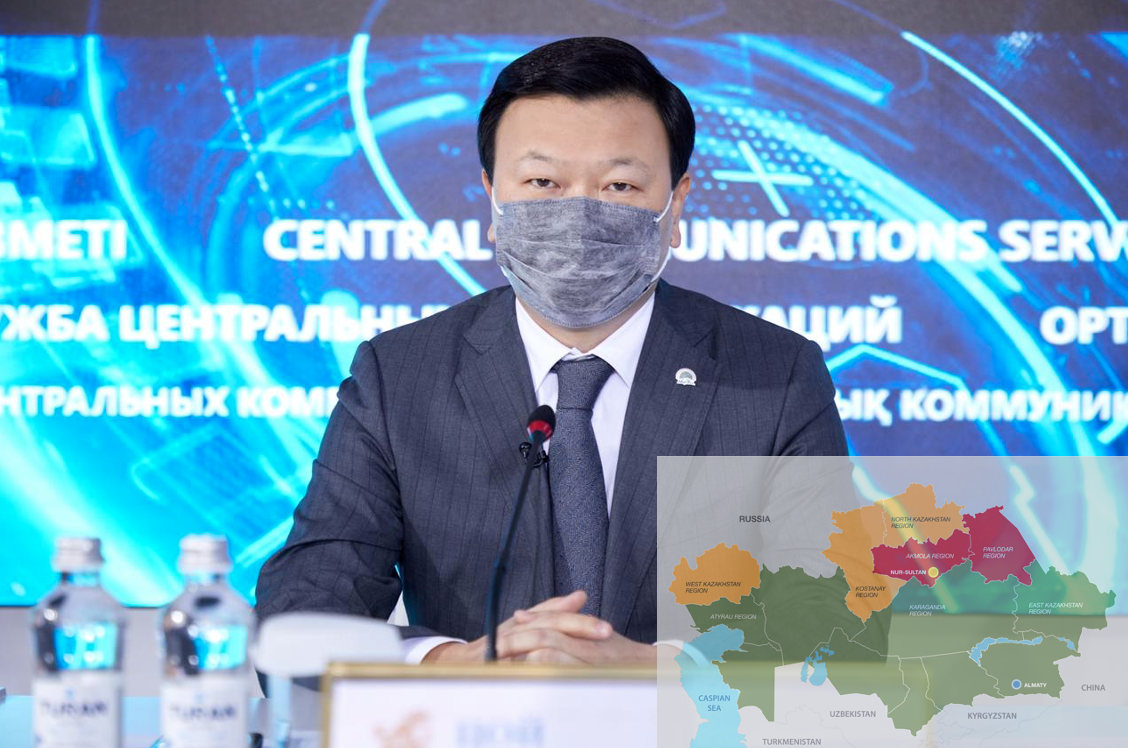NUR-SULTAN – Kazakhstan returned to the low risk green zone, said Kazakh Minister of Healthcare Alexey Tsoy at a press briefing in the Kazakh capital.
The ministry regularly updates the matrix concerning the epidemiological situation. As of Feb. 12, there have been 200,044 confirmed COVID-19 cases and 2,630 deaths. Kazakhstan also reported 48,522 cases of coronavirus pneumonia, the statistics the country has been recording since August last year that include cases clinically not confirmed as coronavirus, but with coronavirus symptoms. 592 people died from coronavirus pneumonia.
There are currently two regions in the high risk red zone – the Akmola and Pavlodar regions. Four are in the moderate risk yellow zone – Nur-Sultan and West Kazakhstan, Kostanai and the North Kazakhstan regions. All other regions are in the green zone.
Tsoy also spoke about the recent changes to the rules regarding border crossings. Kazakh citizens, foreigners with residence permits in the territory of Kazakhstan and members of their families are now allowed to cross the state border of Kazakhstan with a frequency of no more than one time in 30 days (from 90 days before).
Over 13,000 people were vaccinated against coronavirus since Feb. 1, when mass vaccination kicked off in the country. The majority are frontline medical workers.
One hundred and thirty medical workers refused to get vaccinated, and for 218 medical workers, vaccination was postponed due to medical reasons.
“As of Feb. 10, 13,301 people had been vaccinated. The first to be vaccinated are medical workers at infectious disease hospitals, and ambulance services, and other specialties at high risk of exposure to coronavirus. Teachers and law enforcement offices will be next for vaccination as the volume of vaccines increases,” Tsoy said.
There are currently 778 vaccination facilities in the country with only 166 in use. More than 9,000 medical workers have already been trained.
The effects from the vaccination starts to emerge 12-14 days after the first dose, but two doses are required for full protection and are recommended to be injected 21 days apart. An immune response is developed within 1.5 months after the full course of vaccination.
Kazakhstan’s pharmaceutical plant in Karaganda launched the production of the Russian vaccine in Karaganda. In February, it plans to produce 90,000 doses by the end of February and up to 2 million doses by the end of July.
“We receive a lot of questions about the vaccination of people over the age of 65. The ministry will review the possibility of including them in a vaccination group given the existing risks, such as chronic diseases and allergic reactions,” said Tsoy.
Kazakhstan also plans to administer the vaccine produced by Kazakh researchers, named QazCovid-in. The first stage is expected to use nearly 2 million doses.
“We have a vaccine being developed in Kazakhstan, and the technology is slightly different from Sputnik V. It is an inactivated vaccine. Now the third and final phase of clinical trials is underway. 3,000 volunteers have already been vaccinated. The vaccine is showing a good effect. And as a health minister I wanted to support the Kazakh vaccine and will be among the first to receive it when it is officially approved for use in Kazakhstan,” he said.
In 2021, Kazakhstan plans to vaccine up to five million people. The budget allocated funds to finance the purchase of 8 million doses, while public need stands at 10 million, he said.


